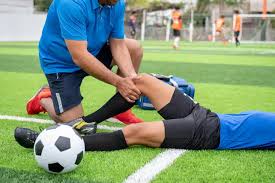Injuries are one of the biggest challenges athletes face in their careers. Whether it’s a sprain, strain, or a more serious ligament tear, injuries can sideline athletes for weeks or even end their seasons. One of the most effective ways athletes prevent these setbacks is by focusing on joint stability a key factor that supports smooth, controlled movements and protects the body under stress.
What is Joint Stability?
Joint stability refers to the ability of a joint to maintain its proper alignment during movement, resisting unwanted shifts or excessive motion that can cause damage. This stability is provided by a combination of muscles, tendons, ligaments, and the joint capsule working together to keep bones aligned and movements controlled.
In sports, where rapid changes in direction, sudden stops, and powerful impacts are common, strong joint stability helps absorb forces safely and prevents injuries like ACL tears, ankle sprains, or shoulder dislocations.
Strengthening Surrounding Muscles
Athletes improve joint stability primarily by strengthening the muscles around the joint. For example, the muscles around the knee quadriceps, hamstrings, and calves play a vital role in keeping the joint stable. By regularly training these muscles through targeted exercises, athletes create a dynamic support system that absorbs shock and controls joint movement.
Strength training exercises like squats, lunges, and resistance band drills are staples in athletic conditioning programs to build this muscular support.
Enhancing Proprioception and Balance
Another key aspect of joint stability is proprioception an athlete’s awareness of their body’s position in space. Good proprioception allows quick and precise adjustments during movement, which is crucial to avoid awkward landings or twists that cause injury.
Balance and stability exercises, such as single-leg stands, balance board drills, and agility ladder routines, enhance proprioceptive abilities. These drills train the nervous system to react swiftly and maintain joint alignment even in unpredictable situations.
Proper Warm-Up and Mobility Work
Before any training session or game, athletes focus on warming up and mobility exercises to prepare their joints for the demands ahead. Dynamic stretches, joint rotations, and mobility drills increase blood flow, improve flexibility, and activate the muscles that support joint stability.
Warming up effectively reduces stiffness and primes the body to move safely and efficiently, lowering injury risk.
The Role of Technique and Movement Patterns
Joint stability is also influenced by proper technique during sport-specific movements. Coaches emphasize correct running form, jumping mechanics, and cutting techniques to ensure that joints are loaded evenly and safely.
Poor technique can overload certain joints or ligaments, increasing injury risk. Regular biomechanical assessments and movement training help athletes maintain optimal patterns that protect their joints.
Rest and Recovery
Finally, joint stability benefits greatly from adequate rest and recovery. Overuse injuries often stem from fatigued muscles that can no longer support the joints effectively. Proper recovery allows muscles and connective tissues to repair and strengthen, preserving joint stability over time.
By focusing on joint stability through muscle strengthening, proprioception training, proper warm-up, technique refinement, and recovery, athletes significantly reduce their risk of injuries. This holistic approach not only keeps athletes in the game longer but also enhances their overall performance, making joint stability a cornerstone of effective injury prevention.

